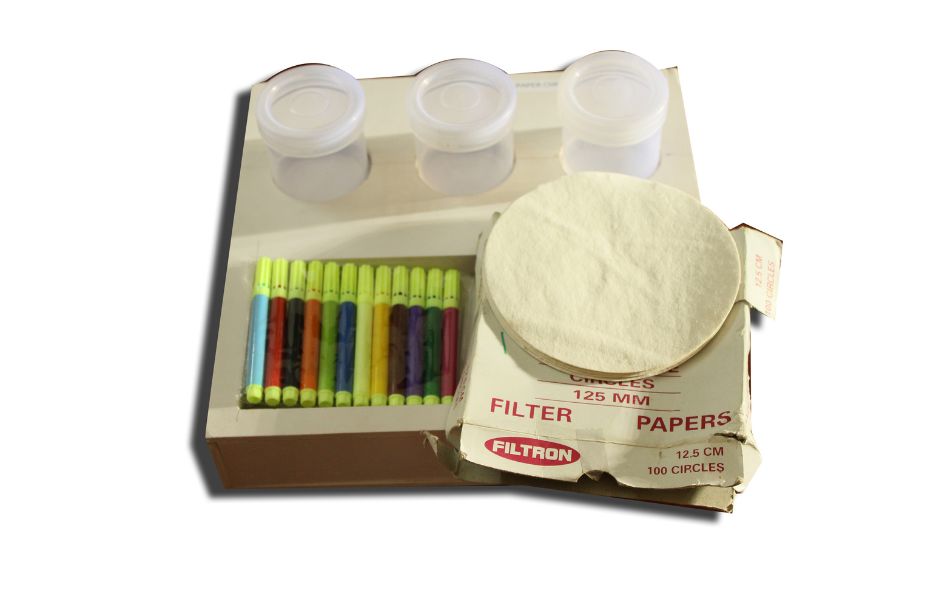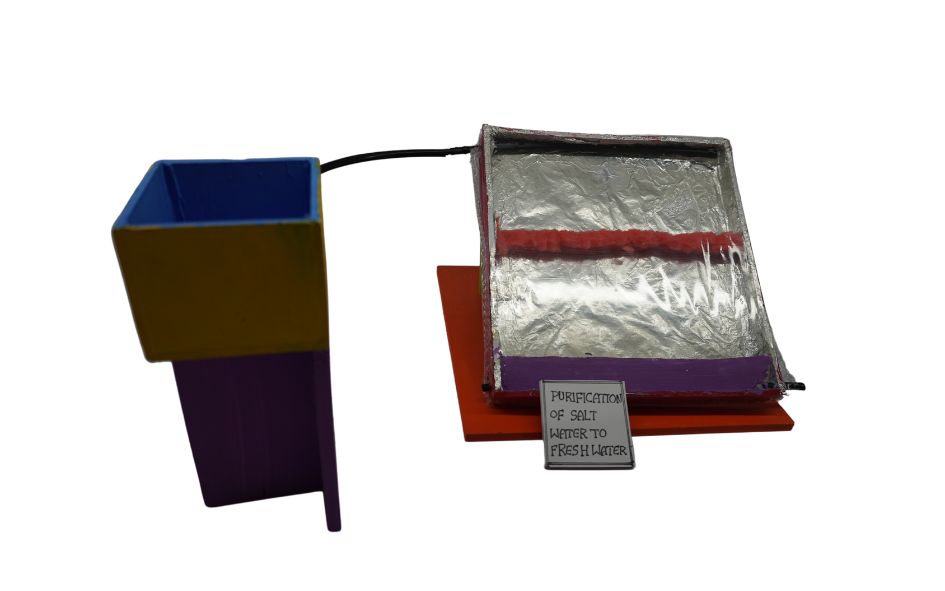

RENEWABLE AND NONRENEWABLE ENERGY WORKING MODEL
SCIENCE LAB EQUIPMENT WORKING MODEL / SCIENCE EXHIBITION WORKING MODEL / SOCIAL LAB EQUIPMENT WORKING MODEL / SOCIAL EXHIBITION WORKING MODEL
5 in stock
Refund
Unfortunately, once an order is placed, there is no refund available. However, we do offer exchanges for defective or damaged items.
Due to the nature of our products and the potential for misuse or mishandling, we do not offer refunds. We believe in customer satisfaction and strive to provide quality exchanges for any issues that may arise.
If you have received a defective or damaged item, please contact our customer service team and they will assist you with the exchange process. Please note that exchanges are subject to availability and product conditions.
We do not offer refunds for change of mind purchases, but we do offer exchanges for valid reasons such as defects or damages.
Delivery
My Science Kart delivers orders through a reliable and efficient shipping service to ensure your products arrive safely and on time.
Yes, you can easily track your order from My Science Kart by using the tracking number provided to you once your order has been shipped.
If you have any issues with your order from My Science Kart, please contact our customer service team who will be happy to assist you and resolve any problems.
Payment
You can pay for your purchases on My Science Kart using various payment methods such as credit/debit cards, net banking, UPI’s and mobile wallets.
Yes, we use industry-standard encryption technology to protect your payment information and ensure that it is secure.
If you have any payment-related queries or issues on My Science Kart, you can contact our customer support team through the website or email us at support@mysciencekart.com.
RENEWABLE AND NONRENEWABLE ENERGY WORKING MODEL
Renewable and nonrenewable energy sources differ in their availability, environmental impact, and sustainability. Here’s an overview of how they work:
**Renewable Energy:**
Renewable energy sources are derived from natural processes that are replenished over relatively short periods. They are considered sustainable because they can be naturally replenished within human timescales. Common examples of renewable energy sources include:
1. **Solar Energy:** Solar panels convert sunlight into electricity through the photovoltaic effect. This electricity can be used to power homes, businesses, and even entire cities. Solar energy is abundant and can be harnessed using solar panels installed on rooftops or in solar farms.
2. **Wind Energy:** Wind turbines capture the kinetic energy of wind and convert it into electricity. As the wind turns the blades of the turbine, a generator inside the turbine produces electricity. Wind farms, located in areas with consistent wind patterns, generate large amounts of clean energy.
3. **Hydropower:** Hydropower utilizes the kinetic energy of flowing or falling water to generate electricity. Dams are built to capture the energy of rivers or waterfalls, which is then used to turn turbines and generate electricity. Hydropower is a reliable and widely used source of renewable energy.
4. **Biomass:** Biomass energy is derived from organic materials such as wood, agricultural crops, and waste. These materials can be burned directly for heat or converted into biogas or biofuels for electricity generation or transportation. Biomass energy is considered renewable because new organic materials can be grown or produced to replace those that are consumed.
5. **Geothermal Energy:** Geothermal energy harnesses heat from within the Earth to generate electricity or provide heating and cooling. Geothermal power plants use steam or hot water from underground reservoirs to drive turbines and produce electricity. Geothermal energy is abundant in regions with active volcanoes or tectonic activity.
**Nonrenewable Energy:**
Nonrenewable energy sources are finite and will eventually be depleted. They are formed over millions of years from organic materials or geological processes and cannot be replenished within human timescales. Common examples of nonrenewable energy sources include:
1. **Fossil Fuels:** Fossil fuels such as coal, oil, and natural gas are formed from the remains of ancient plants and animals that were buried and subjected to high pressure and temperature over millions of years. These fuels are burned to generate electricity, power vehicles, and heat homes. However, their combustion releases greenhouse gases and pollutants, contributing to air pollution and climate change.
2. **Nuclear Energy:** Nuclear energy is generated by splitting atoms in a process called nuclear fission. Uranium, a radioactive element, is used as fuel in nuclear power plants. When uranium atoms split, they release a large amount of energy in the form of heat, which is used to generate electricity. While nuclear energy produces no greenhouse gas emissions during operation, it generates radioactive waste that requires safe storage and disposal.
In summary, renewable energy sources are sustainable and have minimal environmental impact, while nonrenewable energy sources are finite and contribute to environmental degradation and climate change. Transitioning to renewable energy sources is essential for reducing greenhouse gas emissions, mitigating climate change, and ensuring a sustainable energy future.
Unlock the complexities of energy with the RENEWABLE AND NONRENEWABLE ENERGY WORKING set. Perfect for educators and students, this kit includes models of solar panels, wind turbines, coal and natural gas plants to demonstrate the workings of various energy sources. Learn about the impacts and efficiencies of renewable and nonrenewable energy firsthand.
Renewable Energy: Renewable energy sources are those that are naturally replenished and can be used indefinitely without depleting their reserves. These sources include:
- Solar Energy: Energy from the sun that can be converted into electricity using photovoltaic cells or concentrated solar power systems.
- Wind Energy: Energy harnessed from the wind using wind turbines to generate electricity.
- Hydropower: Energy obtained from flowing or falling water, typically by damming rivers or utilizing tidal or wave energy.
- Biomass: Energy derived from organic materials such as wood, crop residues, or organic waste, which can be burned or converted into biofuels.
- Geothermal Energy: Energy obtained from heat stored beneath the Earth’s surface, usually in the form of hot water or steam extracted from geothermal reservoirs.
Renewable energy sources are considered sustainable because they are continually replenished by natural processes and have minimal environmental impact compared to fossil fuels. They play a crucial role in reducing greenhouse gas emissions and mitigating climate change.
Nonrenewable Energy: Nonrenewable energy sources are finite and cannot be replaced within a human lifetime. These sources include:
- Fossil Fuels:
- Coal: A solid fossil fuel formed from plant matter that has been compressed and heated over millions of years.
- Oil: A liquid fossil fuel extracted from underground reservoirs and refined into various petroleum products.
- Natural Gas: A gaseous fossil fuel primarily composed of methane, extracted from underground deposits or produced as a byproduct of oil extraction.
- Nuclear Energy:
- Nuclear energy is generated by splitting atoms in a process called nuclear fission, releasing large amounts of heat that can be used to generate electricity.
Nonrenewable energy sources are finite and are being depleted as they are extracted and used. Additionally, the extraction, processing, and combustion of nonrenewable energy sources can have significant environmental impacts, including air and water pollution, habitat destruction, and contribution to climate change.
In summary, renewable energy sources offer sustainable and environmentally friendly alternatives to nonrenewable energy sources, which are finite and contribute to environmental degradation. Transitioning to renewable energy is essential for addressing climate change and ensuring a sustainable future for generations to come.
| Weight | 1 kg |
|---|---|
| Dimensions | 50 × 40 × 6 cm |
You must be logged in to post a review.
Q & A
Related Products
REFLECTION OF LIGHT PLANE MIRRORS/LAWS OF REFLECTION WORKING MODEL
- ✓ 100% Quality products
ELECTRIC SHOCK WORKING MODEL
- ✓ 100% Quality products
AC ELECTRIC GENERATOR WORKING MODEL
- ✓ 100% Quality products
MAGNETIC FIELD DUE TO SOLENOID WORKING MODEL
- ✓ 100% Quality products
THE RELATION BETWEEN ANGLE OF INCIDENCE AND AND ANGLE OF REFRACTION WORKING MODEL
- ✓ 100% Quality products
LIGHT RAY TRAVELS FROM A DENSER MEDIUM TO RARER MEDIUM WORKING MODEL
- ✓ 100% Quality products
REFRACTIVE INDEX OF THE PRISAM WORKING MODEL
- ✓ 100% Quality products
HEAT, TEMPERATURE and KINETIC ENERGY WORKING MODEL
- ✓ 100% Quality products
Product categories
- Circuits & Projects 233
- My Science Kart 665
- Raw Materials For Projects & Lab Equipments 381
- Science Exhibition 516
- Science Exhibition Projects & Working Models 344
- Biology Science Exhibition Projects & Working Models 31
- Chemistry Science Exhibition Projects & Working Models 12
- Mathematics Science Exhibition projects & Working Models 7
- Physics Science Exhibition Projects & Working Models 129
- Robotics Science Exhibition Projects & Working Models 23
- Social Science Exhibition Projects & Working Models 20
- Science Lab Equipments With Working Models 363
Cart
TRULY INDIAN EDUCATION BRAND
Over 10,000+ Happy Customers
My Science Kart
Address:- Ground floor, Lakshmi Nagar, D.No:- 40-1/1-5, PVP Mall Backside, Mogalrajapuram, Labbipet, Vijayawada, Andhra Pradesh 520010
7673977997, 0866-3543677
mysciencekart@gmail.com
Categories
MAP
© My Science Kart 2024, Designed & Developed By Synfocy Tech Solutions

































Reviews
There are no reviews yet